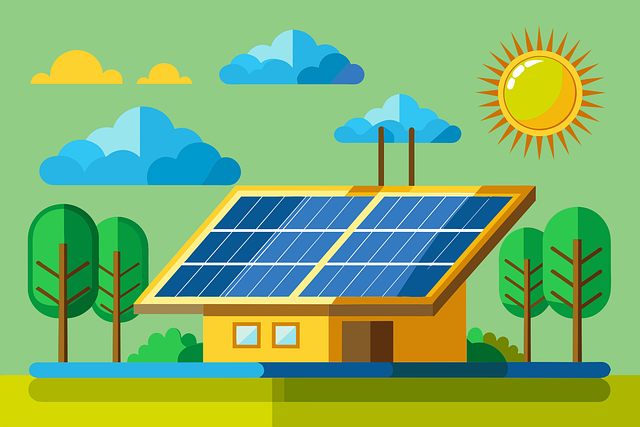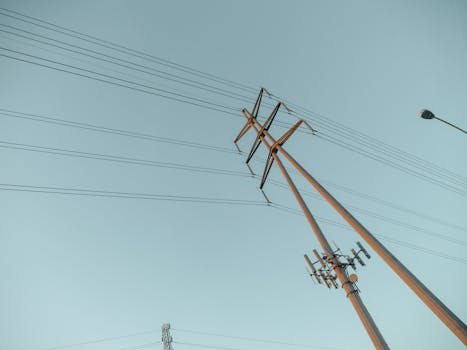“Power Your Future: Master the Art of Wiring Solar Panels to Your Battery Bank!”
Wiring solar panels to a battery bank is a crucial step in creating an efficient solar power system. This process allows you to store the energy generated by your solar panels for later use, ensuring a reliable power supply even when sunlight is not available. Understanding the components involved, such as solar panels, charge controllers, batteries, and inverters, is essential for a successful installation. Proper wiring techniques and safety precautions must be followed to maximize efficiency and prevent damage to the system. This guide will outline the necessary steps and considerations for effectively connecting solar panels to a battery bank.
Understanding Solar Panel Wiring Basics
Understanding the basics of solar panel wiring is essential for anyone looking to harness solar energy effectively. At its core, wiring solar panels to a battery bank involves a few fundamental concepts that ensure the system operates efficiently and safely. To begin with, it is crucial to grasp the difference between series and parallel wiring configurations. In a series configuration, the positive terminal of one panel connects to the negative terminal of the next, effectively increasing the voltage while keeping the current constant. This setup is beneficial when the system requires a higher voltage to match the battery bank’s specifications. Conversely, in a parallel configuration, all positive terminals are connected together, and all negative terminals are connected together, which maintains the voltage while increasing the current. This method is particularly useful when the goal is to maximize the current output, especially in low-light conditions.
Once you have a clear understanding of these configurations, the next step is to consider the components involved in the wiring process. Solar panels, charge controllers, batteries, and inverters are the primary elements of a solar power system. The charge controller plays a pivotal role in regulating the voltage and current coming from the solar panels to the battery bank. It prevents overcharging and deep discharging, which can significantly extend the lifespan of the batteries. Therefore, selecting a charge controller that matches the voltage and current specifications of your solar panels and battery bank is essential.
When wiring the solar panels to the battery bank, it is important to use appropriate gauge wiring to handle the current without overheating. The wire gauge is determined by the distance between the panels and the battery bank, as well as the total current flowing through the wires. Thicker wires are necessary for longer distances or higher currents to minimize voltage drop, which can lead to inefficiencies in the system. Additionally, using connectors that are rated for outdoor use will ensure durability and reliability in various weather conditions.
As you begin the wiring process, safety should be a top priority. Always disconnect the battery bank before making any connections to the solar panels. This precaution prevents any accidental short circuits that could damage the components or pose a safety hazard. It is also advisable to use fuses or circuit breakers in your system to protect against overcurrent situations. These devices act as safeguards, interrupting the flow of electricity in case of a fault, thereby protecting both the wiring and the components.
After ensuring that all safety measures are in place, you can proceed to connect the solar panels to the charge controller. Depending on your chosen configuration, connect the panels in series or parallel, and then link the output of the charge controller to the battery bank. It is essential to observe the correct polarity during these connections; reversing the polarity can lead to system failure or damage. Once everything is connected, you can monitor the system’s performance using a multimeter or a solar charge controller display, which will provide real-time data on voltage, current, and battery status.
In conclusion, understanding solar panel wiring basics is fundamental for anyone looking to set up a solar energy system. By familiarizing yourself with series and parallel configurations, selecting the right components, ensuring safety, and following proper wiring techniques, you can create an efficient and reliable solar power system that meets your energy needs. With the right knowledge and preparation, you can successfully harness the power of the sun to provide sustainable energy for your home or business.
Choosing the Right Battery Bank for Your Solar System

When embarking on a solar energy project, one of the most critical decisions you will face is choosing the right battery bank for your solar system. The battery bank serves as the heart of your solar setup, storing energy generated by your solar panels for use when sunlight is not available. Therefore, understanding the various types of batteries, their capacities, and their compatibility with your solar panels is essential for optimizing your energy storage and ensuring the longevity of your system.
To begin with, it is important to consider the type of battery technology that best suits your needs. The most common types of batteries used in solar applications are lead-acid, lithium-ion, and saltwater batteries. Lead-acid batteries, which include both flooded and sealed varieties, are often favored for their lower initial cost and proven reliability. However, they require regular maintenance and have a shorter lifespan compared to other options. On the other hand, lithium-ion batteries, while more expensive upfront, offer higher energy density, longer life cycles, and require minimal maintenance. Saltwater batteries are an emerging technology that provides a non-toxic alternative, but they are still relatively new and may not be as widely available.
Once you have determined the type of battery that aligns with your budget and maintenance preferences, the next step is to assess the capacity you will need. Battery capacity is typically measured in amp-hours (Ah) and indicates how much energy the battery can store. To calculate your energy needs, you should first determine your daily energy consumption by adding up the wattage of all the devices you plan to power with your solar system. This will give you a clearer picture of how many amp-hours you will require from your battery bank. It is advisable to oversize your battery bank slightly to account for inefficiencies and to ensure you have enough stored energy during periods of low sunlight.
In addition to capacity, the voltage of the battery bank is another crucial factor to consider. Most solar systems operate at either 12V, 24V, or 48V. The voltage you choose will depend on the size of your solar array and the total energy requirements of your system. Higher voltage systems can be more efficient, as they reduce the current flowing through the wires, which minimizes energy loss due to resistance. Therefore, if you have a larger system or plan to expand in the future, opting for a higher voltage battery bank may be beneficial.
Moreover, compatibility with your solar charge controller is essential. The charge controller regulates the voltage and current coming from the solar panels to the battery bank, preventing overcharging and ensuring optimal battery health. Before making a purchase, verify that the battery bank you select is compatible with your charge controller’s specifications. This will help you avoid potential issues and ensure that your system operates smoothly.
Finally, consider the physical space available for your battery bank. Batteries can vary significantly in size and weight, so it is crucial to have a designated area that can accommodate your chosen batteries while allowing for proper ventilation and accessibility. By taking these factors into account, you can make an informed decision that will enhance the efficiency and reliability of your solar energy system. Ultimately, the right battery bank will not only store energy effectively but also contribute to the overall sustainability and resilience of your energy setup.
Step-by-Step Guide to Wiring Solar Panels to a Battery Bank
Wiring solar panels to a battery bank is a crucial step in creating an efficient solar energy system. This process allows you to store the energy generated by your solar panels for later use, ensuring that you have power even when the sun isn’t shining. To begin, it is essential to gather the necessary materials, which typically include solar panels, a charge controller, a battery bank, and the appropriate wiring. Each component plays a vital role in the overall functionality of the system, so understanding their purpose is key.
First, it is important to determine the configuration of your solar panels. Depending on your energy needs and the specifications of your battery bank, you may choose to wire the panels in series, parallel, or a combination of both. Wiring in series increases the voltage, while wiring in parallel increases the current. Once you have decided on the configuration, you can start connecting the solar panels. Begin by connecting the positive terminal of the first panel to the positive terminal of the next panel if you are wiring in series. For parallel wiring, connect all positive terminals together and all negative terminals together. This step is crucial, as incorrect wiring can lead to system inefficiencies or damage.
After the solar panels are connected, the next step is to install the charge controller. The charge controller is a critical component that regulates the voltage and current coming from the solar panels to the battery bank. It prevents overcharging and ensures that the batteries are charged efficiently. To connect the charge controller, first, connect the solar panel leads to the designated solar input terminals on the controller. It is essential to follow the manufacturer’s instructions carefully, as different models may have specific requirements. Once the solar panels are connected to the charge controller, you can proceed to connect the battery bank.
When wiring the battery bank, safety should be your top priority. Before making any connections, ensure that all components are turned off to prevent any electrical hazards. Begin by connecting the positive terminal of the battery bank to the positive output terminal of the charge controller. Next, connect the negative terminal of the battery bank to the negative output terminal of the charge controller. This connection allows the charge controller to manage the flow of electricity between the solar panels and the batteries effectively.
Once all connections are made, it is crucial to double-check your work. Ensure that all terminals are securely fastened and that there are no exposed wires that could lead to short circuits. After confirming that everything is in order, you can turn on the system. The charge controller will begin to monitor the energy produced by the solar panels and manage the charging of the battery bank accordingly. It is advisable to monitor the system regularly, especially during the initial days of operation, to ensure that everything is functioning as expected.
In conclusion, wiring solar panels to a battery bank is a straightforward process that requires careful planning and attention to detail. By following these steps and ensuring that all components are correctly connected, you can create a reliable solar energy system that meets your power needs. As you gain experience, you may find opportunities to optimize your setup further, enhancing efficiency and performance. With the right knowledge and tools, harnessing solar energy can be a rewarding and sustainable choice for your energy needs.
Common Mistakes to Avoid When Wiring Solar Panels to Batteries
Wiring solar panels to a battery bank is a crucial step in creating an efficient solar energy system, yet many individuals encounter pitfalls that can compromise performance and safety. One of the most common mistakes is neglecting to match the voltage of the solar panels with that of the battery bank. For instance, if you have a 12-volt battery bank, using 24-volt solar panels without a proper charge controller can lead to overcharging, damaging the batteries and reducing their lifespan. Therefore, it is essential to ensure that the voltage ratings are compatible to maintain a stable and efficient energy flow.
Another frequent error involves the selection of inappropriate wiring. Using wires that are too thin can lead to significant energy loss due to resistance, which diminishes the overall efficiency of the system. It is advisable to consult wire gauge charts to determine the appropriate thickness based on the distance between the solar panels and the battery bank. Additionally, using high-quality, weather-resistant cables can prevent degradation over time, ensuring a reliable connection.
Moreover, many individuals overlook the importance of proper grounding. Failing to ground the solar panel system can expose it to electrical surges and lightning strikes, potentially causing severe damage. Grounding not only protects the equipment but also enhances safety by reducing the risk of electric shock. Therefore, it is vital to follow local electrical codes and regulations when installing grounding systems.
In addition to grounding, another common mistake is the improper placement of components. Positioning the battery bank in a location that is too hot or too cold can adversely affect battery performance and longevity. Batteries typically perform best in moderate temperatures, so it is wise to place them in a climate-controlled environment or use insulation to protect them from extreme conditions. Furthermore, ensuring adequate ventilation around the batteries is crucial, as this helps dissipate heat generated during charging and discharging cycles.
Another critical aspect often overlooked is the use of a charge controller. Some individuals may attempt to connect solar panels directly to the battery bank without a charge controller, believing it will simplify the setup. However, this can lead to overcharging and battery damage. A charge controller regulates the voltage and current coming from the solar panels, ensuring that the batteries are charged safely and efficiently. Investing in a quality charge controller is essential for protecting your investment and maximizing the performance of your solar energy system.
Additionally, it is important to regularly check connections and components for wear and tear. Corrosion can build up on terminals and connectors over time, leading to poor connections and energy loss. Regular maintenance, including cleaning terminals and tightening connections, can help prevent these issues and ensure optimal performance.
Lastly, many people underestimate the importance of understanding the system’s specifications and requirements. Each solar panel and battery has unique characteristics, and failing to familiarize oneself with these can lead to mismatched components and inefficiencies. Taking the time to read manuals, consult with professionals, and conduct thorough research can save time and money in the long run.
In conclusion, avoiding these common mistakes when wiring solar panels to a battery bank is essential for creating a safe, efficient, and long-lasting solar energy system. By ensuring compatibility, using appropriate materials, grounding properly, maintaining optimal conditions, and investing in quality components, individuals can maximize the benefits of their solar energy systems while minimizing potential issues.
Q&A
1. **Question:** What type of solar panels can be used to charge a battery bank?
**Answer:** Both monocrystalline and polycrystalline solar panels can be used to charge a battery bank, as long as they are compatible with the system voltage.
2. **Question:** What components are needed to wire solar panels to a battery bank?
**Answer:** You will need solar panels, a charge controller, battery bank, wiring (appropriate gauge), and connectors.
3. **Question:** How do you connect the solar panels to the charge controller?
**Answer:** Connect the positive terminal of the solar panel to the positive input of the charge controller and the negative terminal of the solar panel to the negative input of the charge controller.
4. **Question:** How do you connect the charge controller to the battery bank?
**Answer:** Connect the positive output of the charge controller to the positive terminal of the battery bank and the negative output of the charge controller to the negative terminal of the battery bank.
Conclusion
To wire solar panels to a battery bank, first ensure you have the appropriate solar charge controller to regulate the voltage and current from the panels to the batteries. Connect the solar panels in series or parallel, depending on the desired voltage and current output. Then, connect the output of the solar charge controller to the battery bank, ensuring correct polarity (positive to positive and negative to negative). Finally, monitor the system to ensure proper charging and maintenance of the battery bank. Proper wiring and connections are crucial for efficiency and safety in the solar power system.




